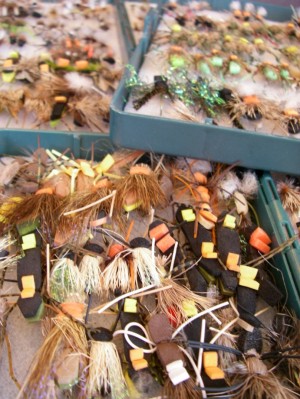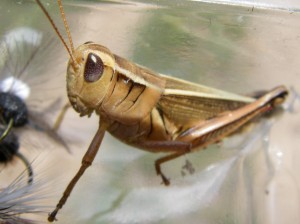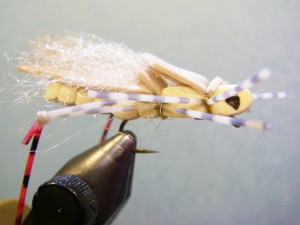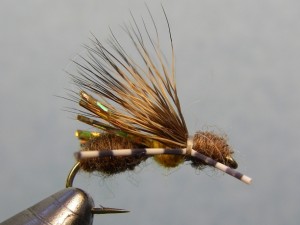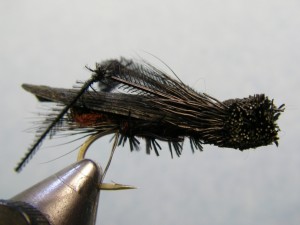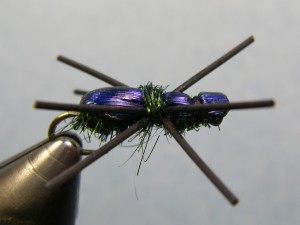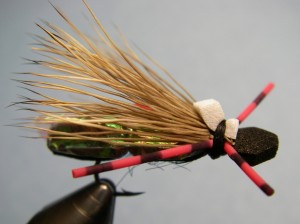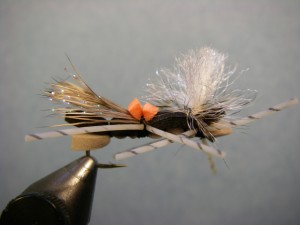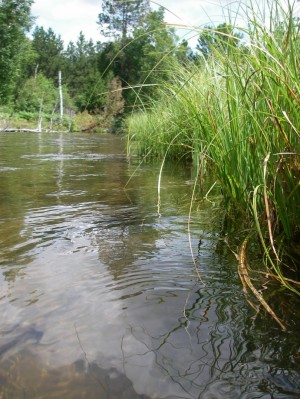Trout fishing continues now that the hex hatch is mostly over. There are still some sporadic bugs on certain sections of rivers, but look for them to be light in numbers and unpredictable but worthy of being in every anglers fly box over the next couple of weeks should the odd ball spinner fall occur. This time of year can offer rare daylight spinner falls in the evening where you will be amazed at what is out and eating.
Water levels are low and clear on the Manistee, Boardman and other area rivers which is normal for this time of year. With the sun out, fishing has been slower during the day so target shade sections of the river or fish either mornings or evening for your best luck. There are still bugs on the Manistee and Boardman: Isonychias, BWO, Cahills and Gray Drakes (Boardman River) and they are starting to realize they better eat smaller bugs because the big hex bugs/porterhouse cuts of the night are pretty much done. Some of the terrestrial and attractor patterns have been working the past week and will only grow in popularity as terrestrial season builds and continues through August.
{A few years ago I wrote an article on Trout Fishing After the Hex Hatch – Click here to read.}
Smallmouth bass are becoming more active in the lower Manistee with the recent heat and this too should continue to build as summer continues to set in with its warm conditions. Small baitfish patterns and crayfish fished on a sink-tip is best and play around with some top-water sliders and poppers for some surface activity. These fish don’t tend to be as large as the smallies found in the bay but they are a lot of fun to chase and reinforce streamer fishing skills making anglers better trout anglers along the way.
The Carp in the bays are pretty much done. You might still find a fish or two cruising but finding good numbers of fish to target is unlikely. If heading out, cover lots of water and don’t be afraid of looking of looking outside of the bays and in Lake Michigan itself for fish – especially a little deeper than normal. Wind direction and overnight temps help dictate where to look, but with all of the boating and swiming activity that is likely to take place over the next week, look for mornings to be your best bet. This year wasn’t our best carp fishing year and I think like a lot of things the strange weather events of the year is partially responsible.
Local lakes and ponds are fishing well for bass and bluegill/panfish. With the weed growth look for the fish to be in the shade and eager to eat your fly. Drop-offs, docks, boat hoists, and other forms of structure are places to target and as the sun goes down or on cloudy days, look for fish to be a little more venturous cruising for food. Spiders and small poppers for the gills with bigger poppers and sliders for the bass. Try baitfish patterns fished deeper with a sink-tip when looking to target the bigger trout.
Safe travels and good luck,
Ted
Terrestrials & Trico hatches in the Months of July & August – start your mornings off on a cool, quiet trout stream.
Salmon: The end of August begins our salmon season extending through September. Limited dates available.
Steelhead: The end of September means it’s time to focus on fall steelhead – extending though November
Booking for all 2012 Seasons and through June 2013 – reserve your place in the boat

